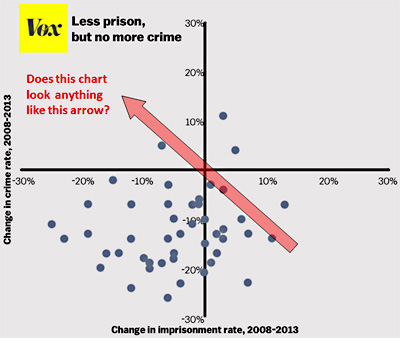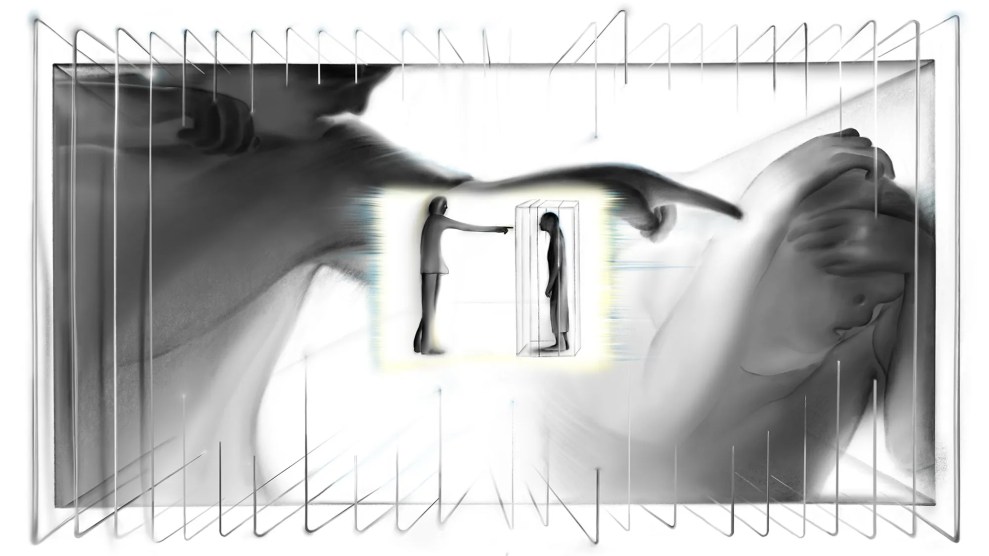Correlation is not causation. This has recently become something of an all-purpose comeback from people who want to sound smart without really understanding anything about a particular research result. Still, whether it’s overused or not, it’s a true statement. When two things move up and down together, it’s a hint that one of them might be causing the other, but it’s  just a hint. Sometimes correlation implies causation and sometimes it doesn’t.
just a hint. Sometimes correlation implies causation and sometimes it doesn’t.
The inverse statement, however, is different: If there’s no correlation, then there’s no causation. With the rarest of exceptions, this is almost always true. Dara Lind provides an example of this as it relates to crime and mass incarceration.
The chart on the right shows the trend in various states at reducing incarceration. If reducing incarceration produced more crime, you’d expect at least some level of correlation. The dots would line up to look something like the red arrow, with lots of dots in the upper left quadrant.
Obviously we see nothing like that. In fact, we don’t appear to see any significant correlation at all. As Lind says, the scatterplot is just a scatter.
It’s possible that a more sophisticated analysis would tease out a correlation of some kind. You can show almost anything if you really put your mind to it. But if a simple, crude scatterplot doesn’t show even a hint of a correlation, it’s almost a certainty that there’s nothing there. And in this case it demonstrates that we’ve locked up too many people. Mass incarceration hit the limit of its effectiveness in the late-80s and since then has been running dangerously on autopilot. It ruins lives, costs a lot of money, and has gone way beyond the point where it affects the crime rate. It’s well past time to reverse this trend and get to work seriously cutting the prison population.
















